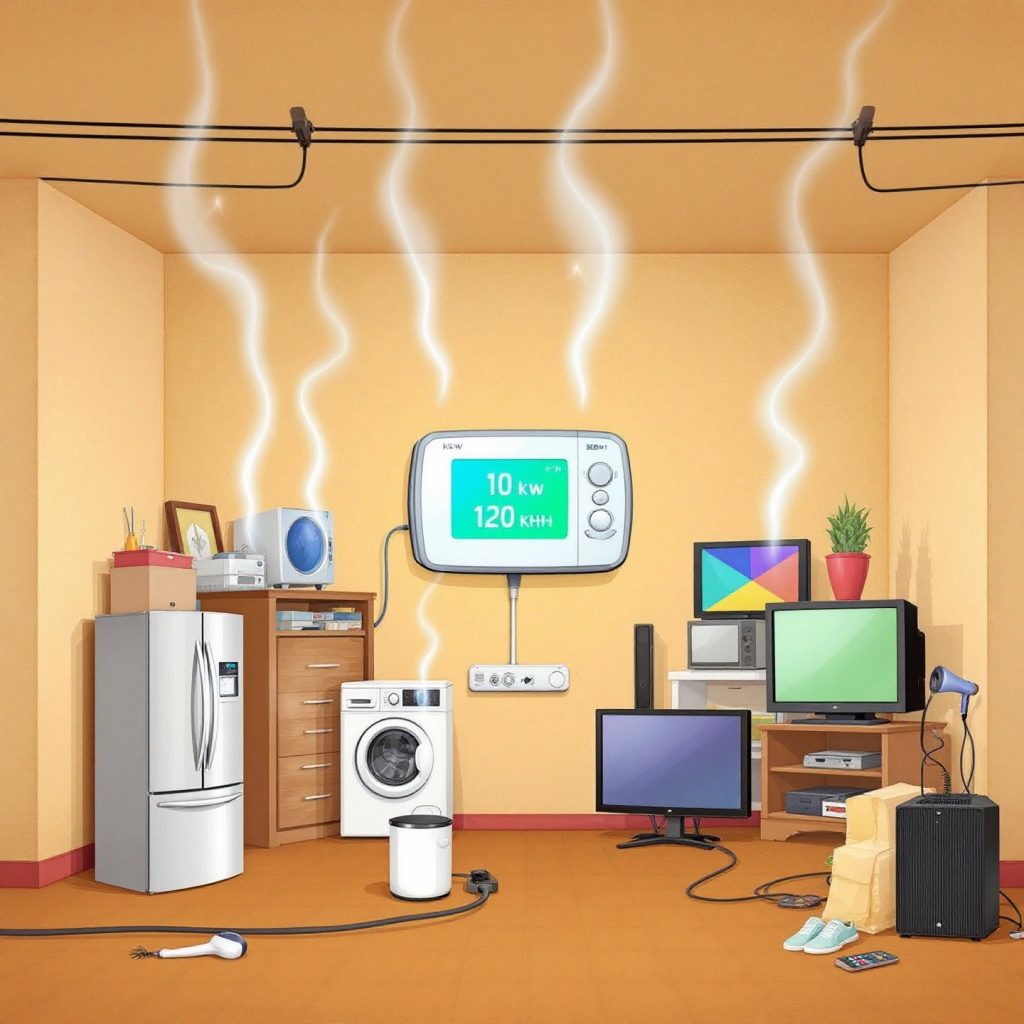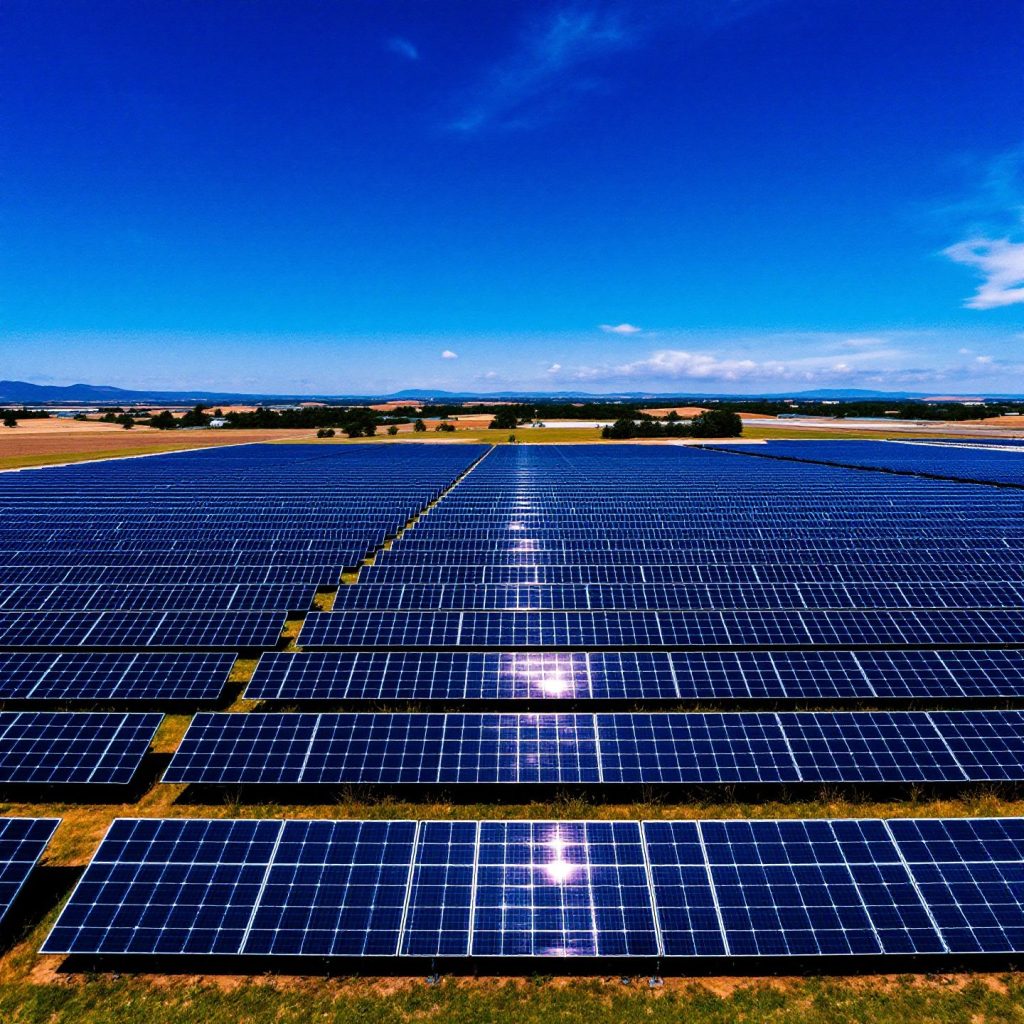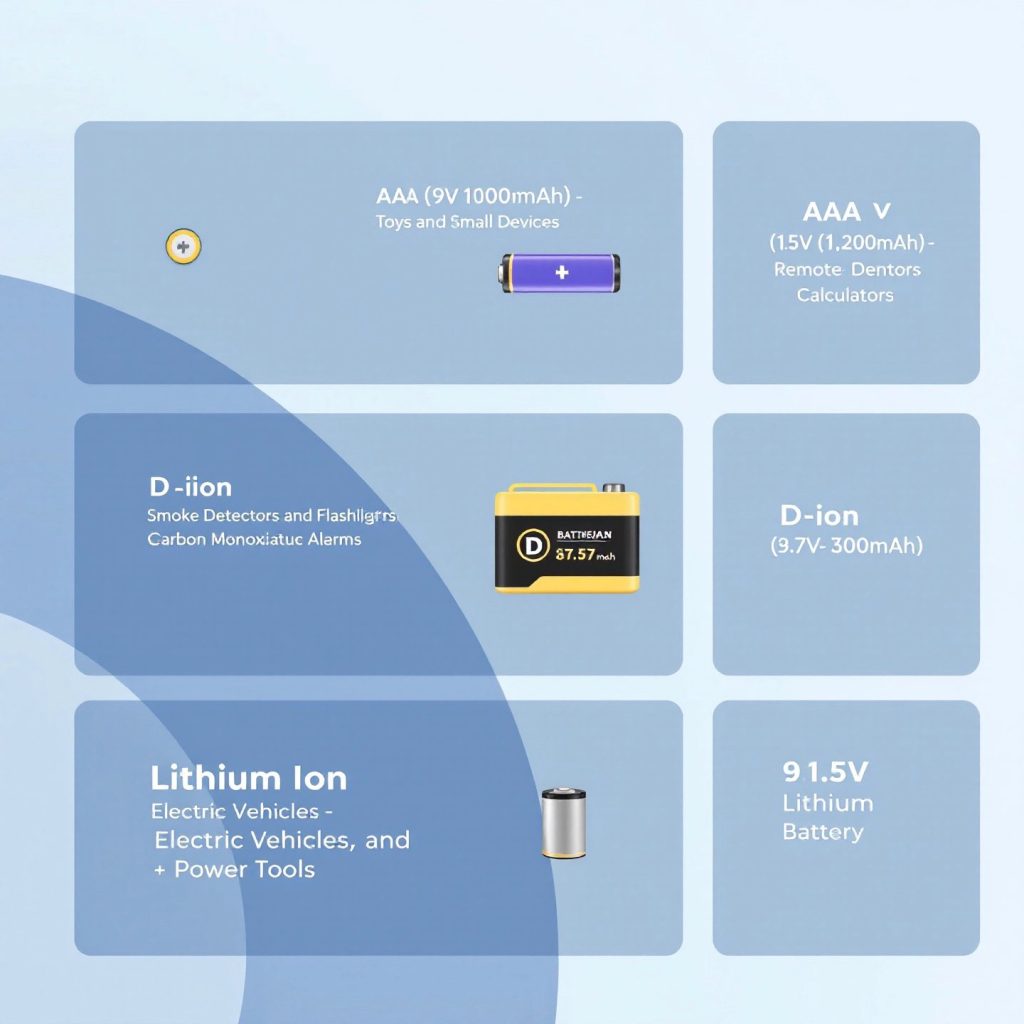Introduction to kw to kwh
When it comes to managing energy effectively, understanding the terms kilowatt (kW) and kilowatt-hour (kWh) is crucial. These concepts are often used interchangeably, yet they describe different aspects of energy usage that are essential for both personal and commercial energy management. So, what exactly do these terms mean?
A kilowatt (kW) is a unit of power, which indicates the rate at which energy is used or generated at any given moment. Think of it like the speedometer in your car, showing how fast you are going at a specific point in time. On the other hand, a kilowatt-hour (kWh) measures energy consumption over time. It’s akin to the odometer in your car, which tells you how far you’ve traveled. In energy terms, this means the total amount of energy used over a period.
Understanding the conversion from kW to kWh is vital for gaining better control over your energy usage. For instance, if you know your household appliances’ power rating in kW, you can calculate how much energy they consume over time, expressed in kWh. This can help you make informed decisions about your energy consumption, potentially leading to cost savings and more efficient energy use.
The significance of kW and kWh extends beyond just understanding your electricity bill. It plays a pivotal role in energy management strategies, allowing for better planning and optimization of energy resources. For example, businesses can monitor their peak demand periods (measured in kW) and strategize to reduce these peaks, thereby lowering their energy costs.
In summary, mastering the basics of kW and kWh, and the conversion between them, empowers you to make smarter energy decisions. By understanding these concepts, you can better manage your energy consumption, leading to both economic and environmental benefits. Whether you’re a homeowner looking to cut down on utility bills or a business aiming for sustainable energy use, grasping the kW to kWh conversion is a step toward a brighter, more energy-efficient future.
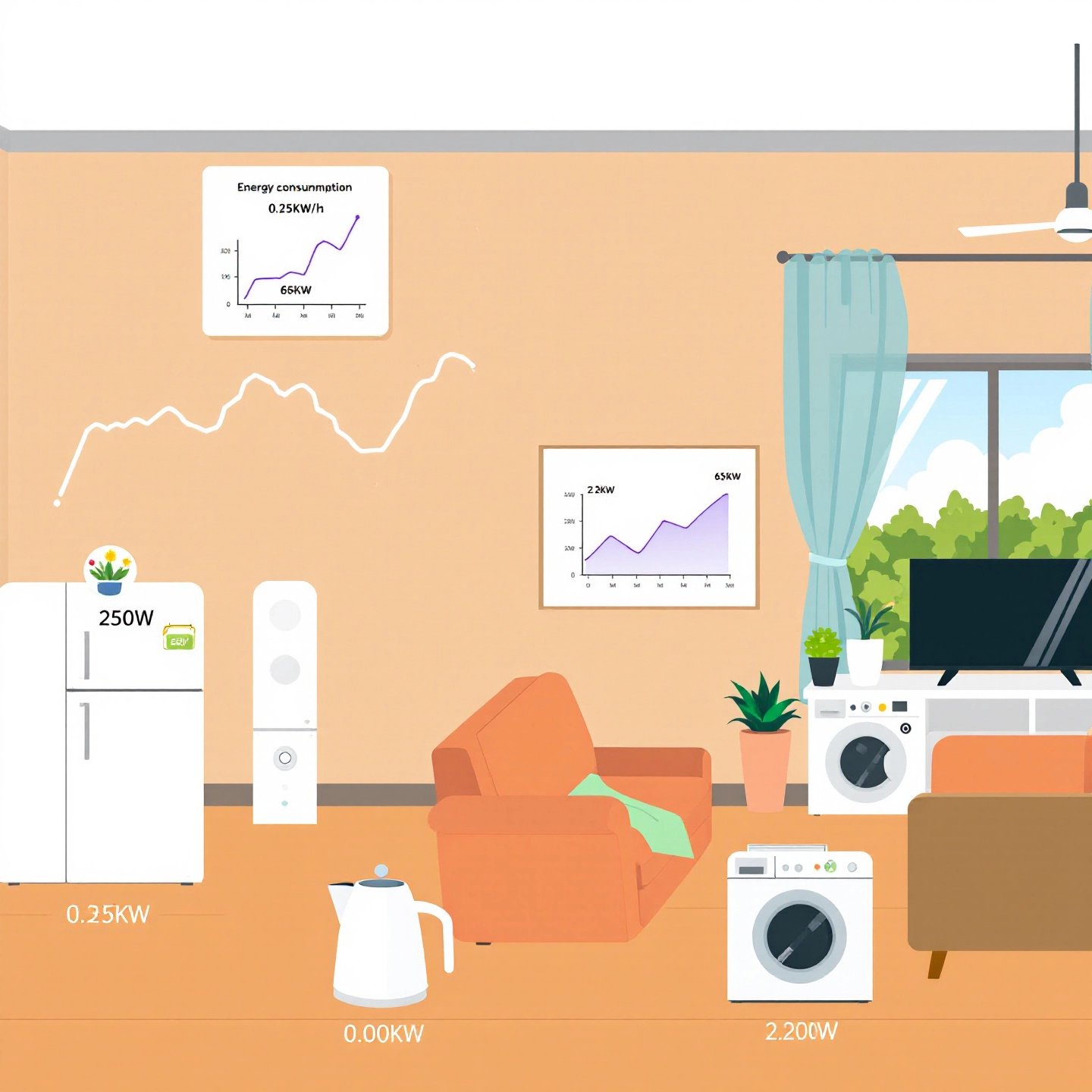
Understanding kw and kwh for Everyday Energy Needs
Grasping the nuances between kilowatts (kW) and kilowatt-hours (kWh) is essential for effective energy management, whether you’re a homeowner or a business operator. The distinction between these two units can significantly impact your understanding of energy consumption and costs.
To put it simply, kilowatts measure power, while kilowatt-hours measure energy. Imagine your home appliances like a treadmill: the kW is the speed setting, showing how fast you’re running at any moment, while the kWh is the distance you cover over time. This analogy helps clarify why knowing both is crucial for managing energy use.
Consider a practical example: your refrigerator. It might have a power rating of 150 watts (or 0.15 kW). If it runs continuously for 24 hours, it consumes 3.6 kWh of energy (0.15 kW x 24 hours). This calculation shows how energy consumption accumulates over time, which directly affects your electricity bill. Understanding this can help you identify which appliances are the biggest energy users, allowing you to make informed decisions about usage and potentially reduce costs.
Another scenario involves your electricity bill, which typically charges you based on kWh. By understanding the kW rating of your appliances, you can estimate their contribution to your overall energy consumption and identify opportunities for savings. For example, switching to energy-efficient appliances can lower both your kW usage and your kWh consumption, leading to reduced energy bills.
Moreover, recognizing the difference between kW and kWh is vital for businesses aiming to optimize their energy consumption. Businesses often face demand charges based on their highest kW usage during peak periods. By monitoring and managing these peaks, companies can significantly lower their energy expenses.
In summary, understanding kW vs kWh is not just about deciphering your energy bill—it’s about empowering yourself to make smarter energy choices. Whether it’s through reducing usage during peak times, investing in energy-efficient appliances, or simply being more conscious of your daily energy habits, mastering these concepts can lead to substantial financial and environmental benefits. This knowledge lays the foundation for a more sustainable and cost-effective approach to energy consumption.
Key Differences Between kw to kwh and kwh to kw
Understanding the distinction between kilowatts (kW) and kilowatt-hours (kWh) is essential, but equally important is knowing how to convert between these measures. This knowledge empowers you to manage your energy consumption more effectively, whether you’re a homeowner tracking your electricity usage or a business optimizing energy costs.
kw to kwh Conversion
The conversion from kilowatts to kilowatt-hours is straightforward. It involves multiplying the power in kilowatts by the time in hours. This calculation gives you the total energy consumed over that period, expressed in kWh. For example, if a device operates at a power level of 2 kW for 3 hours, it consumes 6 kWh of energy (2 kW x 3 hours = 6 kWh). This conversion is crucial for understanding how your energy consumption accumulates over time and directly impacts your electricity bill.
By mastering the kw to kwh conversion, you can better manage your energy usage. For instance, knowing how much energy your appliances use helps you identify high-energy-consuming devices, allowing you to adjust their usage patterns accordingly for potential savings.
kwh to kw Conversion
Conversely, converting from kilowatt-hours to kilowatts can help you understand the average power demand over a specific period. This conversion is particularly useful for businesses that need to monitor their instantaneous power usage and manage peak demand charges. To convert kWh back to kW, you divide the total energy consumed by the number of hours it was used. For example, if a business consumes 120 kWh over 24 hours, the average power demand is 5 kW (120 kWh / 24 hours = 5 kW).
This conversion is essential for assessing the efficiency of energy usage over time, helping businesses and homeowners alike to optimize their energy strategies. By understanding both kw to kwh differences and kwh to kw conversion, you can make informed decisions about energy consumption, potentially reducing costs and improving efficiency.
In conclusion, mastering these conversions allows you to take control of your energy use, whether you’re aiming to cut costs on your utility bill or enhance energy efficiency in your operations. By understanding these key differences, you pave the way for smarter energy management and a more sustainable future.
Simple Steps to Convert kw to kwh Manually
Understanding how to manually convert kilowatts (kW) to kilowatt-hours (kWh) can empower you to take control of your energy consumption and costs. This straightforward process involves a simple calculation that anyone can perform. Let’s break it down into easy-to-follow steps.
Step-by-Step Manual Calculation
- Determine the Device’s Power Rating: First, identify the power rating of the device or appliance in kilowatts. This information is usually found on the device label or in the user manual. If the power is listed in watts, convert it to kilowatts by dividing by 1,000. For instance, a 1,500-watt heater converts to 1.5 kW (1,500 ÷ 1,000 = 1.5 kW).
- Identify the Usage Time: Next, determine how many hours the device will be used. This could be a daily, weekly, or monthly estimate depending on your needs.
- Calculate the Energy Consumption: Multiply the power rating in kilowatts by the number of hours the device is used. This gives you the energy consumption in kilowatt-hours. For example, using a 1.5 kW heater for 3 hours results in 4.5 kWh of energy consumption (1.5 kW x 3 hours = 4.5 kWh).
This manual kw to kwh calculation method is a practical tool for estimating energy usage and can help you make informed decisions about your energy consumption habits. By regularly calculating kilowatt-hours, you can identify which appliances consume the most energy and adjust usage accordingly to save on your electricity bill.
Imagine you have several appliances running simultaneously, such as a refrigerator, a washing machine, and a television. By calculating the kilowatt-hours for each, you can pinpoint which devices are the biggest energy consumers and consider strategies to reduce their use, such as unplugging them when not in use or upgrading to more energy-efficient models.
Incorporating these manual calculations into your routine can lead to significant energy savings over time. By understanding how to calculate kilowatt-hours, you empower yourself to make smarter energy choices, contributing to both financial savings and a more sustainable energy footprint.
Next, let’s explore how calculators can simplify these conversions and help you optimize energy usage even further.
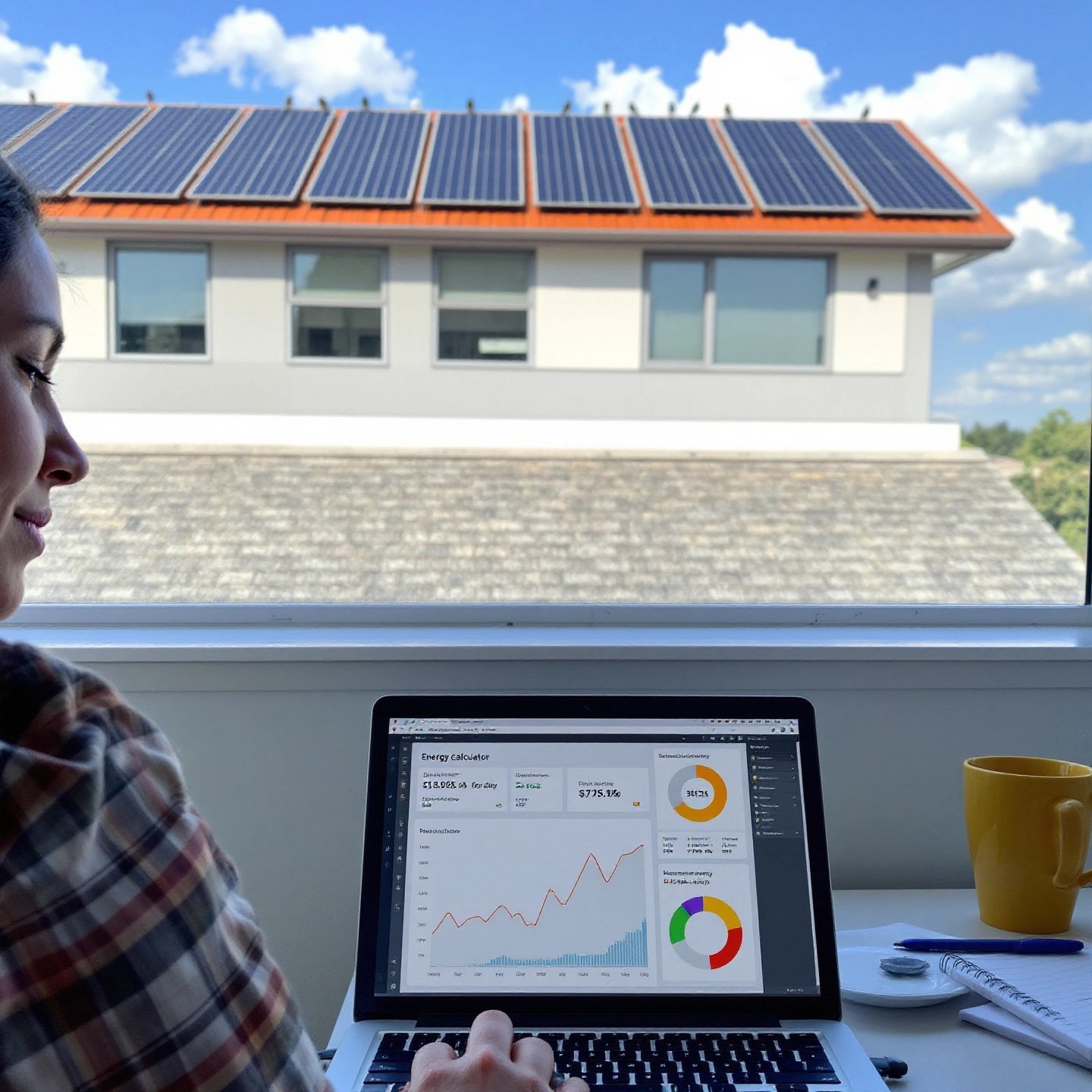
Using Calculators to Streamline Your kw to kwh Conversion
In today’s fast-paced world, efficiency is key, especially when it comes to managing your energy consumption. This is where calculators, both online and offline, come into play, providing a convenient and accurate way to convert kilowatts (kW) to kilowatt-hours (kWh). These tools simplify the process, offering instant results that can help you better understand and manage your energy usage.
Online calculators, such as the one available on RapidTables, allow you to input the power in kilowatts and the time in hours to quickly determine the energy consumption in kilowatt-hours. This ease of use is particularly beneficial for homeowners and businesses alike, who may not have the time or expertise to perform manual calculations regularly. By using these tools, you can effortlessly track your energy usage, leading to more informed decisions about your consumption patterns.
Advantages of Using Calculators
- Accuracy: Calculators eliminate human error, providing precise results that are crucial for effective energy management.
- Time-Saving: With just a few clicks, you can obtain your energy consumption data, freeing up time for other important tasks.
- Accessibility: Many calculators are available online for free, making them accessible to anyone with an internet connection.
For those involved in solar energy planning, calculators become even more essential. Solar energy calculations often require precise data to determine the number of solar panels needed for specific energy goals. This is where tools from platforms like Renewable Energy Nexus come into play. These tools not only assist in basic kw to kwh conversions but also provide advanced calculations for solar panel installations, helping you determine the optimal setup for your energy needs.
Imagine you’re planning to install solar panels on your home. A calculator can help you determine how many panels are required to meet your energy consumption based on your current kWh usage. This ensures that your solar setup is both efficient and cost-effective, maximizing your investment in renewable energy.
In conclusion, whether you’re a homeowner looking to cut down on energy costs or a business aiming to optimize solar panel installations, leveraging calculators can significantly enhance your energy management strategies. By integrating these tools into your routine, you can achieve greater accuracy, save time, and ultimately make smarter, more sustainable energy decisions.
Practical Tips for kwh to kw Conversions in Solar Systems
When planning a solar panel system, understanding how to convert kilowatt-hours (kWh) to kilowatts (kW) is crucial. This conversion is key for accurately sizing your solar system to meet your energy needs and ensuring that it operates at peak efficiency. Let’s dive into how these conversions play a vital role in solar system energy planning.
Understanding the Basics of kwh to kw Conversion
The conversion from kWh to kW helps determine the average power demand over a specific period. This is particularly important in solar energy planning, where accurate calculations can influence the number of solar panels required. To convert kWh to kW, you divide the total energy consumed by the number of hours it was used. For instance, if your household uses 30 kWh over a day, the average power demand is 1.25 kW (30 kWh / 24 hours = 1.25 kW).
This calculation is essential for assessing your energy needs and ensuring your solar system is neither underpowered nor overbuilt, which can affect both performance and cost-effectiveness.
Importance of Accurate Time-Based Calculations
Accurate time-based calculations are critical for peak production, especially when considering solar insolation—the amount of solar energy received. According to PV Education, understanding solar insolation in your area helps determine how much energy your solar panels can produce. This involves calculating the number of peak sun hours your location receives, which directly impacts the efficiency of your solar setup.
For example, if your area receives an average of 5 peak sun hours per day, you can estimate the daily energy production by multiplying the kW capacity of your solar system by these hours. This ensures that your system is optimized for local conditions, maximizing energy production and cost savings.
Steps for Effective Solar System Sizing
- Assess Your Energy Needs: Start by calculating your total kWh consumption to understand your energy requirements.
- Determine Peak Sun Hours: Research your area’s average peak sun hours to gauge potential solar energy production.
- Calculate Required kW Output: Use the kWh to kW conversion to determine the necessary output for your solar panels.
- Select Appropriate Solar Panels: Based on your calculations, choose panels that meet your energy needs without exceeding your budget.
By following these steps and utilizing accurate kwh to kw conversions, you can effectively plan your solar system, ensuring it meets your energy needs while optimizing performance and cost. This approach not only supports sustainable energy usage but also contributes to long-term financial savings.
Next, we’ll explore common mistakes to avoid in kw to kwh conversions, ensuring your energy management strategies remain efficient and effective.
Avoiding Common Mistakes When Converting kw to kwh
Converting kilowatts (kW) to kilowatt-hours (kWh) might seem straightforward, but several common errors can lead to inaccurate energy calculations. These mistakes can impact your understanding of energy consumption and potentially inflate your electricity bills. Let’s explore some of these errors and how to avoid them for accurate energy conversion.
Common Mistakes in kw to kwh Conversions
- Incorrect Multiplication: One of the most frequent errors is incorrect multiplication of power and time. Remember, the basic formula is Power (kW) x Time (h) = Energy (kWh). Misplacing a decimal or misreading a power rating can lead to significant discrepancies in your calculations. For instance, mistaking a 1.5 kW appliance as 15 kW will result in a tenfold error in energy consumption estimates.
- Ignoring Time Intervals: Another common mistake is overlooking the time interval for which the power is consumed. It’s crucial to calculate the total hours the appliance is used. For instance, assuming a device runs continuously when it only operates intermittently can lead to overestimation of energy use.
- Misinterpreting Power Ratings: Power ratings can vary, especially with devices that have fluctuating power usage, like air conditioners or refrigerators. These appliances may not always operate at their maximum kW rating, so using an average power rating over the period is essential for accurate calculations.
Ensuring Accurate Energy Conversion
To ensure accurate energy conversion, it’s vital to verify your calculation inputs meticulously. Here are some tips:
- Double-Check Power Ratings: Always verify the power ratings from reliable sources, such as the appliance’s manual or label. If necessary, consult the manufacturer’s website for detailed specifications.
- Use Consistent Units: Ensure that you are using consistent units across your calculations. Convert all power ratings to kilowatts and time to hours before performing the multiplication.
- Utilize Tools and Calculators: Consider using online calculators for quick and error-free conversions. These tools can help cross-check your manual calculations and provide instant feedback.
By avoiding these common mistakes and focusing on accurate energy conversion, you can better manage your energy consumption, leading to potential cost savings and improved energy efficiency. Next, we’ll delve into how to plan your energy usage effectively, comparing hourly and yearly consumption data for optimal energy management.
Managing Hourly and Yearly Energy Planning with kw to kwh
Effective energy planning is crucial for both households and businesses aiming to optimize their electricity usage. By understanding how to manage your energy consumption over different timeframes—hourly, daily, and yearly—you can make informed decisions that lead to cost savings and greater efficiency. Let’s explore how kw to kwh conversions can aid in this planning process.
Short-Term vs Long-Term Energy Planning
When it comes to energy planning, it’s essential to distinguish between short-term and long-term consumption. Short-term planning focuses on managing energy use on an hourly or daily basis, which can help identify peak usage times and reduce unnecessary consumption. Long-term planning, on the other hand, involves analyzing yearly consumption trends to identify opportunities for efficiency improvements and cost reductions.
For instance, by understanding your hourly energy consumption, you can adjust your usage during peak hours to avoid high energy costs. Similarly, analyzing your yearly data can reveal seasonal patterns, allowing you to implement strategies such as upgrading to energy-efficient appliances or adjusting thermostat settings during extreme weather conditions.
Utilizing kw to kwh for Effective Energy Management
The conversion from kilowatts (kW) to kilowatt-hours (kWh) plays a pivotal role in both short-term and long-term energy planning. By calculating your energy use in kWh, you can better understand your consumption patterns and identify areas for improvement. Here’s a simple way to visualize this:
| Time Frame | Energy Consumption (kWh) | Strategies for Optimization |
|---|---|---|
| Hourly | Calculate based on device usage per hour | Reduce usage during peak hours |
| Daily | Sum of hourly consumption | Identify daily peaks and adjust accordingly |
| Yearly | Aggregate of daily consumption | Implement energy-efficient solutions |
By utilizing this approach, you can not only manage your energy consumption more effectively but also make data-driven decisions that lead to significant cost savings over time.
Implementing Energy Planning in Real Life
Imagine you’re a homeowner looking to reduce your energy bills. By tracking your hourly and daily energy consumption, you might notice that your air conditioning system is a major energy consumer during the summer months. Armed with this information, you could decide to invest in a more efficient system or adjust your usage patterns to save on costs.
For businesses, the stakes can be even higher. By analyzing yearly energy consumption data, companies can plan for upgrades to more energy-efficient equipment, negotiate better rates with energy providers, or even consider alternative energy sources like solar power to offset their consumption.
In conclusion, mastering kw to kwh conversions and implementing structured energy planning can lead to both immediate and long-term benefits. By understanding and managing your energy consumption, you can achieve greater efficiency, reduce costs, and contribute to a more sustainable future. Next, we’ll explore how applying this knowledge in real-world scenarios can optimize electricity usage further.
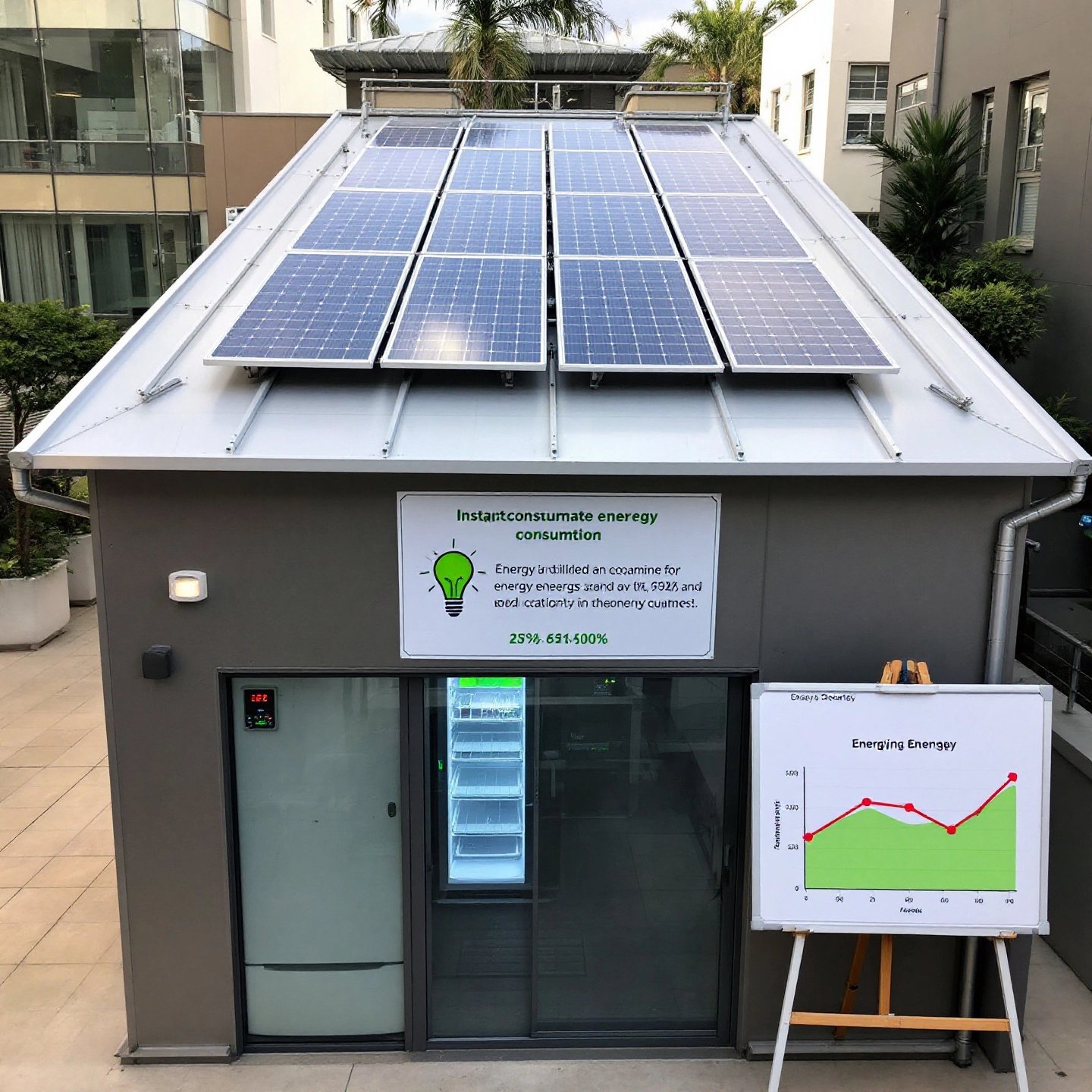
Applying kw to kwh Knowledge in Real-World Scenarios
Understanding how to convert kilowatts (kW) to kilowatt-hours (kWh) is not just a theoretical exercise—it’s a practical skill that can lead to significant energy and cost savings in real-world scenarios. Whether you’re a homeowner looking to reduce utility bills or a business owner striving for operational efficiency, applying this knowledge can optimize electricity usage effectively.
Real-World Energy Optimization for Homeowners
For homeowners, the ability to calculate energy consumption in kWh allows for better management of household appliances and systems. Imagine you have multiple high-energy devices such as air conditioners, heaters, and washing machines. By understanding their kW ratings and calculating their kWh consumption, you can identify which appliances are the most energy-intensive and adjust their usage accordingly. This might involve using appliances during off-peak hours when electricity rates are lower or investing in energy-efficient models to reduce overall consumption.
Additionally, homeowners can leverage the insights gained from kW to kWh calculations to explore renewable energy solutions. Platforms like Renewable Energy Nexus offer a range of solar panel solutions designed to harness clean energy, reduce carbon footprints, and lower utility bills. By integrating solar panels, homeowners can generate their own electricity, thus minimizing reliance on grid power and achieving greater energy independence.
Optimizing Energy Usage for Businesses
For businesses, real-world energy optimization involves a strategic approach to managing energy costs. By analyzing kWh consumption data, businesses can identify peak usage times and implement measures to flatten these peaks, such as scheduling energy-intensive operations during off-peak hours or upgrading to energy-efficient equipment. This not only reduces demand charges but also enhances operational efficiency.
Moreover, businesses can benefit from solar panel installations to offset energy consumption. By using tools provided by Renewable Energy Nexus, companies can calculate the optimal number of solar panels required to meet their energy needs, ensuring a cost-effective and sustainable energy solution. These solar panel solutions not only contribute to environmental goals but also offer long-term financial savings by reducing dependency on traditional energy sources.
In conclusion, applying kw to kwh knowledge in real-world scenarios empowers both homeowners and businesses to optimize their electricity usage. By understanding and managing energy consumption, individuals and organizations can achieve significant cost savings, enhance sustainability, and pave the way towards a more energy-efficient future. As we continue to explore energy management strategies, the next section will summarize the importance of these conversions for smarter energy decisions.
Conclusion
In our journey through understanding kilowatts (kW) and kilowatt-hours (kWh), we’ve uncovered the vital role these concepts play in making smarter energy decisions. By mastering the conversion between kW and kWh, individuals and businesses alike can unlock significant energy savings and contribute to sustainable energy management.
Firstly, recognizing the difference between kW and kWh is crucial for accurate energy consumption tracking. This understanding empowers you to assess the efficiency of your appliances and systems, thereby identifying potential areas for cost reduction. For instance, by calculating the kWh consumption of your household devices, you can pinpoint high-energy users and adjust their operation to off-peak times, leading to immediate energy savings.
Moreover, the ability to convert between these units is essential for planning and optimizing energy usage over time. For homeowners, this might mean investing in energy-efficient appliances or exploring renewable energy solutions, such as solar panels, which can reduce reliance on traditional power sources and lower utility bills. Businesses, on the other hand, can use this knowledge to manage peak demand charges and enhance operational efficiency, further driving down energy costs.
Long-term, embracing kw to kwh conversions supports a more sustainable approach to energy management. By being mindful of energy consumption patterns and making informed decisions, you contribute to reducing environmental impact, a critical goal in today’s climate-conscious world. Implementing energy-efficient practices not only benefits your wallet but also plays a part in preserving our planet for future generations.
In conclusion, understanding and applying kw to kwh conversions is a cornerstone of effective energy management. Whether your goal is to save money, enhance sustainability, or both, this knowledge equips you with the tools needed to make informed, impactful energy decisions. As we move towards an increasingly energy-conscious future, mastering these conversions will be key to achieving both economic and environmental goals.
Frequently Asked Questions
1. How many kW is in a kWh?
A kilowatt-hour (kWh) is the amount of energy consumed when a device uses one kilowatt (kW) of power for one hour. Understanding this helps in calculating energy usage and optimizing electricity consumption.
2. Is 1 kW equal to 1 kWh?
No, 1 kW is a unit of power, while 1 kWh represents energy consumed over time. For example, a 1 kW device running for one hour will use 1 kWh of energy.
3. How do you convert kW to kWh?
To convert kW to kWh, multiply the power in kilowatts by the time in hours. This calculation helps determine energy consumption, crucial for managing electricity costs.
4. Why is understanding kW and kWh important?
Understanding kW and kWh is vital for managing energy consumption, reducing electricity bills, and making informed decisions about energy efficiency and sustainability.
5. How can calculators help with kW to kWh conversions?
Calculators streamline the conversion process, providing accurate results quickly. They are especially useful for planning solar panel installations and optimizing energy usage.

